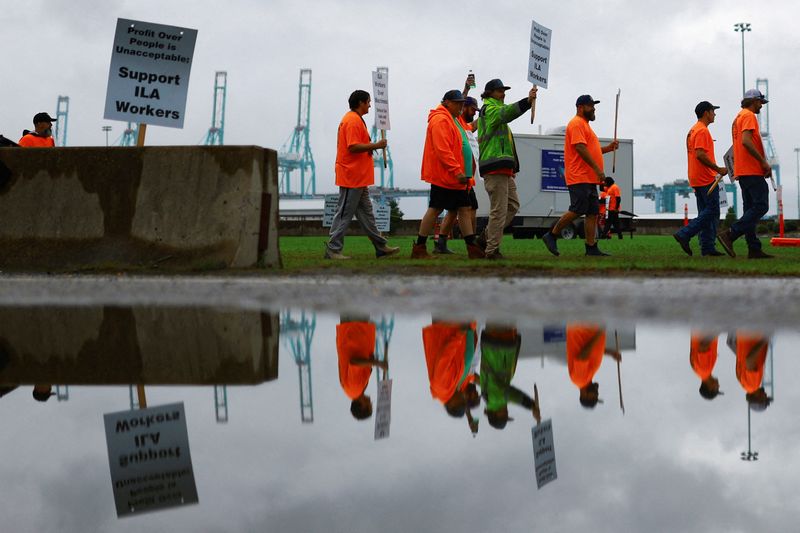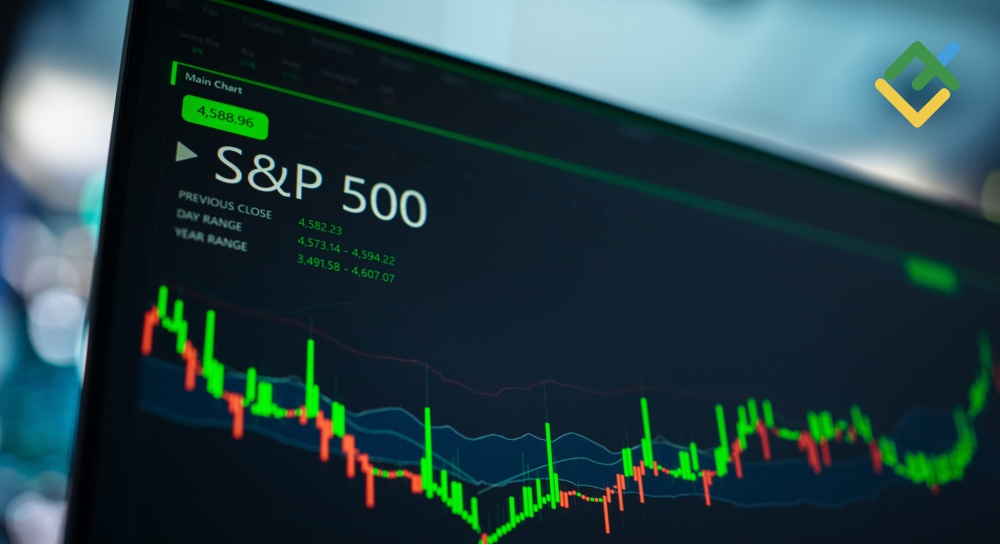
A look at the day ahead in U.S. and global markets from Mike Dolan
With Middle East tensions dialing back up, U.S. port workers on strike and global industry under the cosh, the final quarter of 2024 promises to be a bit edgier for world markets than the relatively serene first nine months.
The fourth quarter was barely underway on Tuesday when 12 months of intense conflict in Gaza and Lebanon spilled over again into another direct standoff between Israel and Iran – jarring recently listless energy markets and provoking some limited hedging of risk assets.
With year-end political risks already high due to the U.S. election, a fresh flaring of Middle East violence has added anxiety at the margins – even if most economic and fundamental market settings still seem positive.
Iran said early on Wednesday that its missile attack on Israel was over, barring further provocation, even as Israel and the United States promised to strike back against Tehran as fears of a wider war smouldered.
But, as so often over the past year, the market reaction to the latest geopolitical twist has been pretty limited so far.
Crude oil prices – with one eye on Wednesday’s OPEC+ ministerial meeting – did pop back above $70 per barrel – but that’s only back to where it was early last week. Year-on-year crude declines that are depressing headline annual inflation rates across the world are still running close to 20%.
As it stands, no OPEC policy change is expected and the group is set to raise output from December by 180,000 bpd monthly. And Saudi Arabia warned oil prices could drop to as low as $50 per barrel if OPEC+ members don’t stick to agreed-upon production targets, the Wall Street Journal reported.
Back stateside, the U.S. east coast port strikes could well distort monthly economic data and inflation readings at a critical time for policymakers – though there are doubts whether any damage would be durable and some of the biggest worries are for already-hobbled European automakers.
But there is little doubt the global industrial economy is struggling badly again, judging by the stream of U.S. and global manufacturing surveys for September released on Tuesday.
JPMorgan’s catch-all global factory index is now showing the deepest contraction of worldwide activity this year and just a whisker from its deepest downturn since the aftermath of the 2020 pandemic shock.
There were some silver linings in the U.S. readouts, however, which showed improving new orders and a drop in factory input prices to nine-month lows. Along with news of a pick-up in economy-wide job openings in August, the economic ‘soft landing’ picture holds together nicely.
In a big week for labor market data, ADP’s private sector payrolls report is due out later on Wednesday, alongside another long list of Federal Reserve speakers.
And despite the geopolitical jolt, interest rate and stock markets have held relatively steady.
The S&P 500 fell back less than 1% from record highs on Tuesday and stock futures are off only modestly ahead of Wednesday’s bell. The VIX volatility gauge is hovering just under 20, a level it briefly poked above for the first time in three weeks on Tuesday.
Fed futures pricing is virtually unchanged from Monday.
‘Safety’ bids in U.S. Treasuries after the Iran attack news have mostly been unwound already – with 10-year yields back just above 3.75% after completing a round-trip from lows just under 3.70% on Tuesday.
Gold prices were flat on Wednesday and didn’t even hit new records on Tuesday’s developments.
The dollar held onto gains, perhaps partly due to safe haven demand, but it was largely against the euro, which is suffering from stepped-up European Central Bank easing speculation.
With euro zone inflation swooning below target, European industry contracting and the regional auto sector in deep trouble, economists have rushed to change ECB forecasts over the past week and most do not see another rate cut this month.
The market mood around the world on Wednesday was also more circumspect.
Asia stocks were mostly lower, with Tokyo’s Nikkei underperforming with losses of 2%.
The yen gave back any tangential safety bid it may have received too, however, with Bank of Japan Governor Kazuo Ueda also saying the central bank must be vigilant to fallout from unstable markets and global economic uncertainties before pushing ahead with further interest rate hikes.
But with mainland Chinese markets closed for the rest of the week, Hong Kong was the only indicator of ongoing optimism about last week’s frantic economic stimulus and the Hang Seng jumped another 6% on Tuesday’s reopening there.
European stocks actually ticked higher again.
In company news, Nike (NYSE:NKE) withdrew its annual revenue forecast on Tuesday, just as a new CEO is set to take the helm at the sportswear giant that is staring at a holiday season likely to be filled with discounts and weak traffic on its website and mobile apps.
That has sent Nike’s shares tumbling 6% ahead of Wednesday’s open.
Key developments that should provide more direction to U.S. markets later on Wednesday:
* US September ADP private sector payrolls; Brazil August industrial production
* OPEC+ ministerial panel meets to review oil policy
* Cleveland Federal Reserve President Beth Hammack, St. Louis Fed President Alberto Musalem, Richmond Fed chief Thomas Barkin, and Fed Board Governor Michelle Bowman all speak; European Central Bank board member Isabel Schnabel speaks

* German Chancellor Olaf Scholz meets French President Emmanuel Macron in Berlin; British Prime Minister Keir Starmer meets European Commission President Ursula von der Leyen in Brussels
* US corporate earnings: Conagra Brands (NYSE:CAG), Levi Strauss (NYSE:LEVI), RPM International (NYSE:RPM), NovaGold Resources
(By Mike Dolan, editing by Gareth Jones; [email protected])
This post is originally published on INVESTING.



